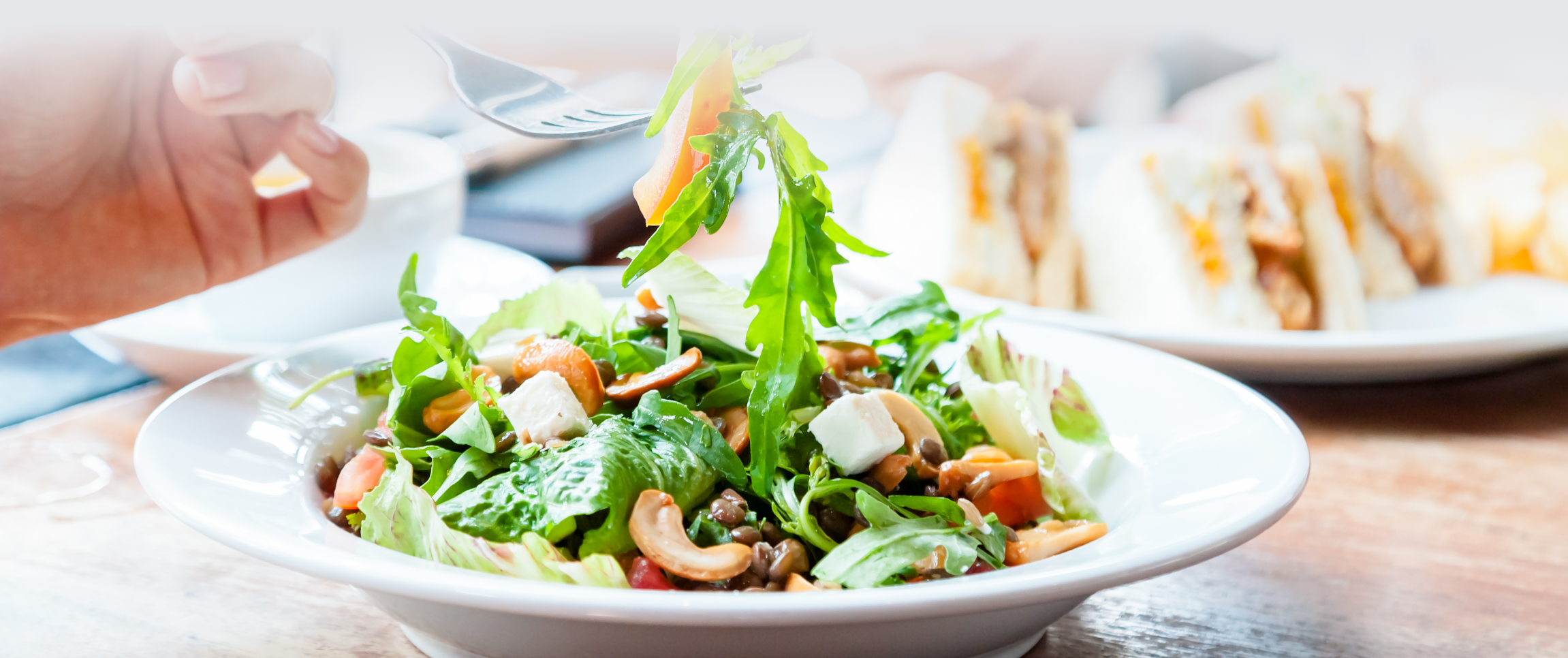Every wide-appeal menu could use a salad lane. Besides offering a variety of tastes and influences that can accommodate different dietary needs or preferences—from vegetarian to vegan to gluten-free and everything in between—salads are perceived as healthy and value-oriented to consumers, making them a great choice that feels good without breaking the bank.
Salads can also be relatively high-margin menu items, using cost-effective, seasonal ingredients that can help eliminate kitchen waste and reach revenue projections. Yet, despite their popularity, the salad section too often becomes predictable. As we enter prime salad season, shake things up by thinking outside the produce box. Create salads focused on building a medley of flavors and textures that treat produce with respect.
Green Start
Start by incorporating lesser-known lettuces. Spicy and bitter greens such as arugula, radicchio, watercress, endive, and frisée not only offer a nice kick, but also provide a unique contrast when played off each other. Butter and little gem lettuces, with mild flavor and soft, tender textures, feel luxurious.
Whatever greens you choose, ensure they are as vibrant as possible and lightly dressed. Stick to splashy vinaigrettes brightly punctuated with tarragon, capers, lemongrass—the pantry is the limit. If desiring a cream-based dressing, consider subbing mayonnaise and sour cream for Greek yogurt or buttermilk. And if serving kale, dress and allow to sit for 15 minutes before serving, breaking down the tough character of this now ubiquitous, vitamin-rich staple.
Ingredient Showcase
Fresh fruits and vegetables have certainly moved to the fore in the last decade of farm-to-table dining, but a great salad—one that moves on the menu and transcends its nutritional utility—remains a rarity. However, when the right combination of flavor and functionality comes together, a salad can be as spectacular as any menu’s most savory course.
Think about not only what is currently offered at farmers markets, but what people want to eat now. Then switch up preparations, grilling carrots and asparagus, for example, or dressing them lightly and differently than the salad’s main dressing. Likewise, highlight proteins that consumers are flocking to, such as seared ahi tuna, pan-fried scallops or on-trend meats like pork tenderloin, flank steak, or flavor packed shredded chicken thighs. Playing with contrasting flavors like acidic, sweet, umami, and fatty elements can take a salad to wow level with little effort.
Presentation, Presentation, Presentation
When it comes to creating a versatile salad, it’s all about layering and texturing. Consider adding a swoosh of dressing on the dish before plating the greens. A supporting cast of nuts, seeds, and legumes add variety and pack in the health benefits.
Finally, crunch factor provides the finishing touch. Homemade croutons, crispy bacon, charred chickpeas, dried cheeses, fried ramen noodles, and wasabi or Sriracha peas all provide pops of color and appealing mouthfeels, sure to make your new salad a lively showstopper guests will tout.



